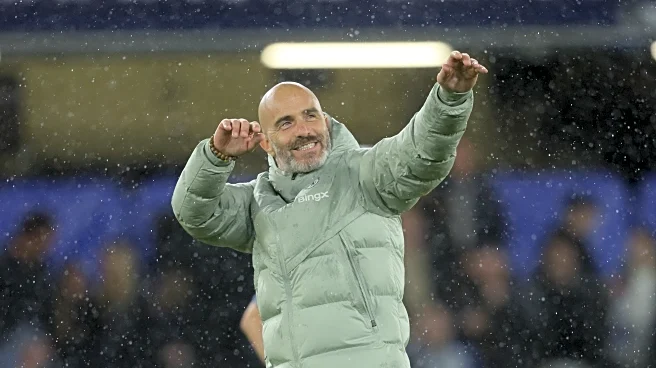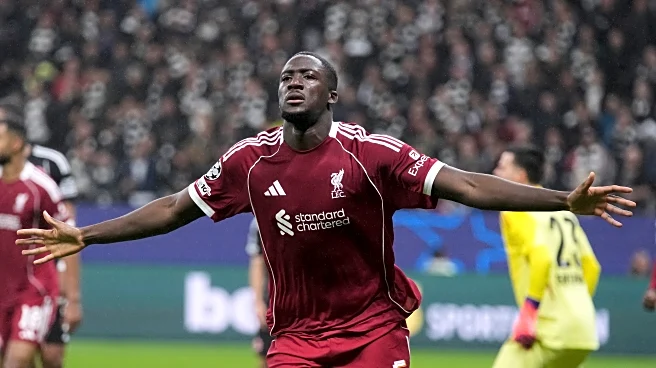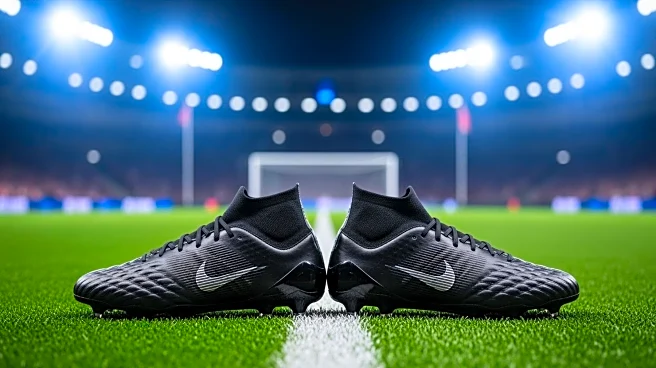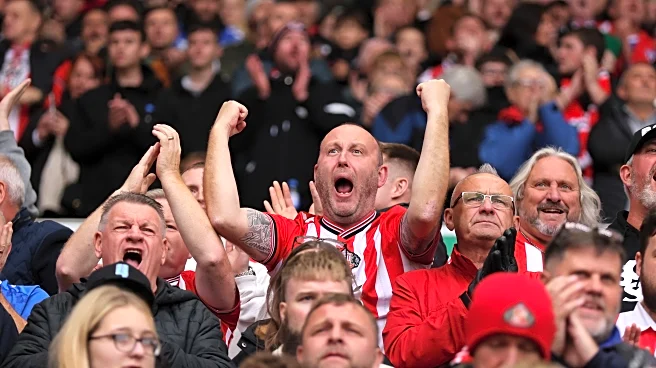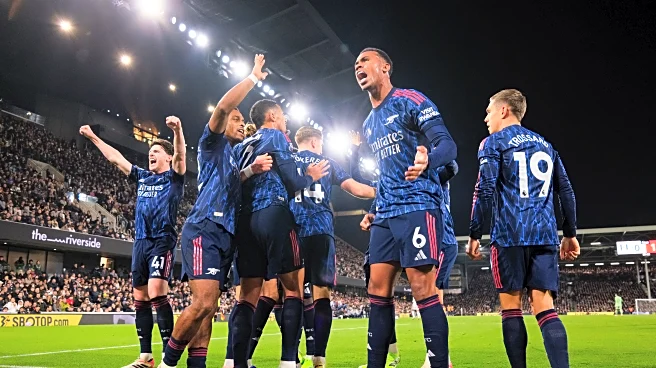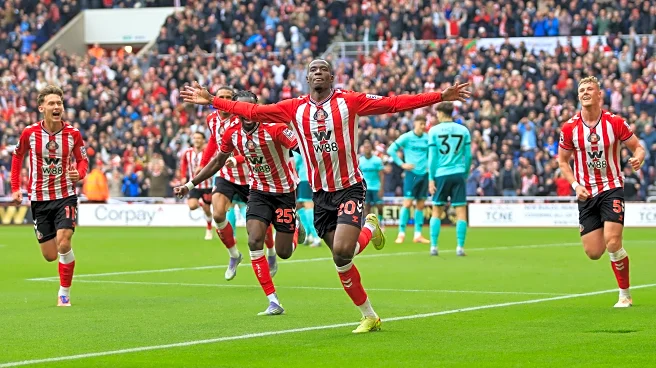What's Happening?
Chelsea's young winger Tyrique George fulfilled a personal dream by scoring in the Champions League during Chelsea's 5-1 victory over Ajax. The match was notable for featuring goals from three teenagers,
marking a first in Champions League history. George, who entered the game after halftime, scored within two minutes, expressing his excitement and satisfaction with the achievement. The win extended Chelsea's winning streak to four games, reinforcing their strong performance in the competition following a previous defeat to Bayern Munich.
Why It's Important?
The emergence of young talent like Tyrique George in high-stakes matches such as the Champions League highlights Chelsea's successful investment in youth development. This strategy not only boosts the team's current performance but also secures its future competitiveness. The victory against Ajax and the contribution of young players could enhance Chelsea's reputation as a nurturing ground for emerging football stars, potentially attracting more young talent to the club. Additionally, maintaining a winning streak strengthens Chelsea's position in the league, increasing their chances of competing for the title.
What's Next?
Chelsea is set to face Sunderland in the Premier League, where they aim to continue their winning momentum. Currently positioned fifth in the league, Chelsea is five points behind the leaders, Arsenal. A victory against Sunderland would improve their standing and bolster their title contention. The team's focus on daily training and continuous improvement, as emphasized by George, suggests a strategic approach to maintaining their competitive edge in upcoming matches.
Beyond the Headlines
Chelsea's focus on integrating young players into high-pressure games like the Champions League could influence broader trends in football management. This approach may encourage other clubs to prioritize youth development and provide opportunities for young athletes to shine on international stages. The success of young players in such environments can shift cultural perceptions about the readiness and potential of youth in professional sports.


